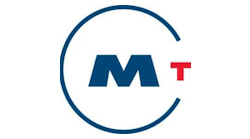Governor and State Legislature Make the Bay Area Commuter Benefits Program Permanent
After achieving strong bi-partisan support in the State Legislature the Bay Area Commuter Benefits Program has been signed into law by Governor Edmund G. Brown, Jr.
The author of the bill, Senator Steve Glazer, D-Orinda, called it, “A great day for the environment, a great day for commuters and their employers.”
Senate Bill 1128, which passed the State Legislature without any opposition, authorizes the Bay Area Air Quality Management District and the Metropolitan Transportation Commission to jointly continue the Bay Area Commuter Benefits Program, a program that requires employers with 50 or more full-time employees in the Bay Area to offer commuter benefits to their employees. Employers subject to the program are required by law to register via the program website, select a commuter benefit and offer their program to their employees. The goal of the program is to reduce greenhouse gas emissions and traffic congestion by using the federal tax code to encourage employees to commute by adopting alternatives to driving alone.
“With the Bay Area’s expanding economy and growing population, it is critical that we promote the use of commute alternatives such as transit, carpooling and cycling to decrease single occupancy driving on Bay Area roadways,” said Jack Broadbent, executive officer of the Air District. “The Bay Area Commuter Benefits Program encourages regional companies to help their staff look for and try alternatives to driving alone.”
The Air District and MTC jointly developed the Bay Area Commuter Benefits Program in response to Senate Bill 1339, which was signed into law by Governor Brown in September 2012. The program is designed to give employers various options for compliance, including simply offering their employees the ability to pay for transit or vanpooling with pre-tax dollars, which can save both employers and employees money through lower taxes. The program was modeled on commuter benefit ordinances established in 2009 in San Francisco, Berkeley and Richmond, as well as at San Francisco International Airport.
Research shows that employees are more likely to consider alternatives to driving alone if they are encouraged by their employer. Employers can reduce vehicle trips to worksites by promoting alternative commute modes, such as transit, carpooling, bicycling, walking and telecommuting. As of August 31, nearly 4,100 employers were enrolled in the program and approximately 1.3 million employees were receiving commuter benefits, primarily via pre-tax dollars. Close to 57 percent of enrolled employers had offered no commuter benefits to their employees prior to the program’s existence.
“MTC is grateful for the Legislature and administration’s support of our regional commuter benefits program, the first such program nationwide,” said Randy Rentschler, MTC director of legislation and public affairs. “This program is a true partnership with employers, recognizing the critical role they can play in helping to reduce congestion and greenhouse gas emissions in our vibrant region. At a time when residents are struggling with ever-growing housing costs, it also plays a key role in lowering transportation costs.”
The Bay Area Commuter Benefits Program gives employers the flexibility to offer one or more of the following commuter benefit options to their employees:
- Option 1: pre-tax benefit - Allow employees to exclude up to $255 of their transit or vanpooling expenses each month from taxable income.
- Option 2: employer-provided subsidy - Provide a subsidy to reduce or cover employees’ monthly transit or vanpool costs, up to $75 per month.
- Option 3: employer-provided transit - Provide a free or low-cost transit service for employees, such as a bus, shuttle or vanpool service.
- Option 4: alternative commuter benefit - Provide an alternative commuter benefit that is as effective in reducing single-occupancy commute trips as options 1, 2 or 3.
When employees choose the pre-tax benefit option, the reduction in taxable income allows employers to reduce their Social Security and Medicare payroll taxes. Employees can save as much as 40 percent on the cost of their monthly transit or vanpool expenses by setting the funds aside pre-tax.
Employers subject to the Commuter Benefits Program will be notified by the Air District and must register at 511.org. Assistance is available through MTC’s 511 Regional Rideshare Program to help employers comply with the program. Employers can visit 511.org and click on Bay Area Commuter Benefits Program to get more information or call 511 and say “commuter benefits” at the first prompt to connect to employer outreach staff. Detailed information about the Commuter Benefits Program and employer requirements can also be found in the “Employer Guide” at 511.org.


